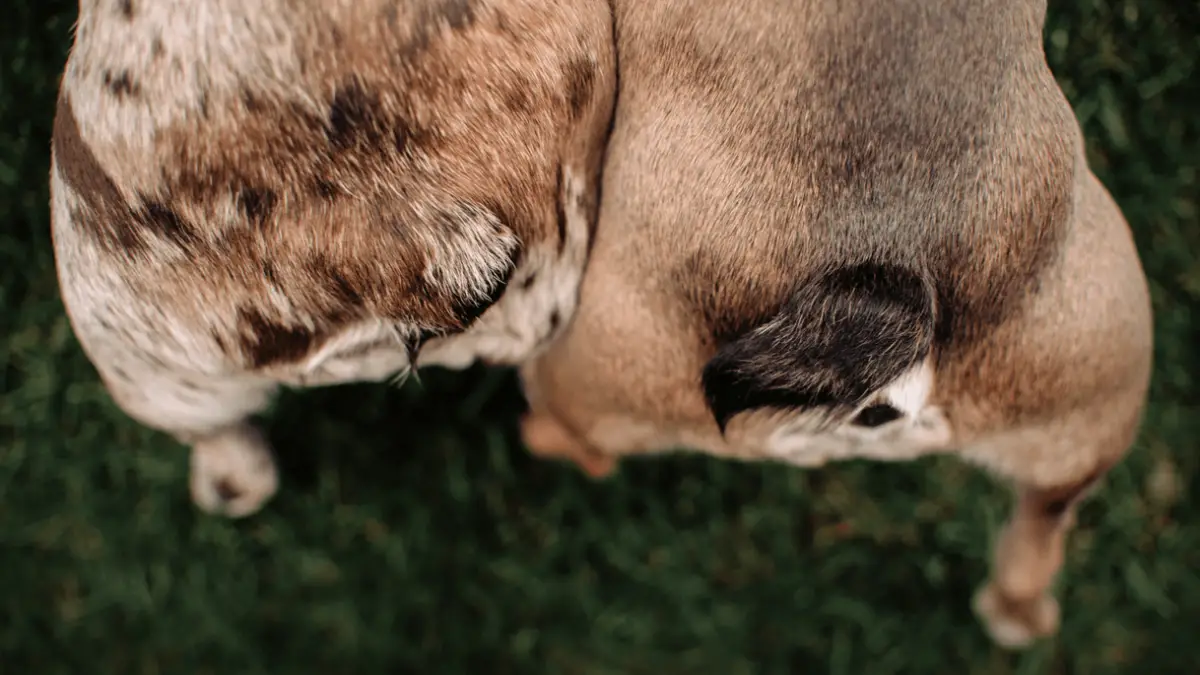Corkscrew Tail In Dogs: Causes, Symptoms, Treatment
15.05.2022.
As a dog breeder, there are not many things in life that can make you as happy as when your new puppies arrive. Producing a healthy litter is something all dog breeders take great pride in. Those puppies will make their families happy for the rest of their lives.
Unfortunately, many conditions and congenital disabilities can cause all sorts of complications. One of those conditions is called a corkscrew tail. Some breeds are more prone to it, and even though it is not the most common condition or complication, as a dog breeder, you should know what it is, what causes it, and how it is treated. Here's what you should know about corkscrew tails in dogs.
What is the corkscrew tail?
Dogs with a corkscrew tail, or a screw or ingrown tail, are more likely to be found in certain breeds. If vertebrae are merged together or abnormally arranged, the tail can take on an unusual shape and curvature due to the abnormality. Affected dogs have a deep fold of skin around a malformed tail that is usually tightly curled. Deep skin folds are prone to various infections, which can worsen and have an adverse effect on the dog's overall well-being. Anatomical deformities in the dog's tail may prevent them from defecating normally, leading to the accumulation of feces in the skin folds around their tail.
It is common to see a corkscrew tail in;
However, it can also be found in other breeds.
What are the symptoms of a corkscrew tail?
Recurring tail area infections are the most common symptom of this condition. Because of the itching and discomfort caused by a rear-end infection, infected dogs may chew on their tails or scoot (dragging the rear on the ground). In addition, the infected skin will most likely have a foul odor. This odor could result from bacteria or trapped feces beneath the skin's surface. Your dog may have a corkscrew tail if you notice tail fold infection signs in individual dogs from breeds more susceptible to this condition.

How do vets diagnose it?
A physical examination is typically the first step vets take. To determine whether your dog has a corkscrew tail, your veterinarian will thoroughly examine your dog's hind end.
Veterinarians may recommend x-rays to better understand your dog's tail vertebral anatomy. If your dog's tail fold is infected, your veterinarian may order diagnostic tests. Antibiotics that are most effective against the specific strains of bacteria causing the infection can be identified through techniques like sensitivity testing and bacterial culture.
RELATED: Should Dogs Lick Their Wounds? Will It Heal Them?
How is it treated?
Treatment for a corkscrew tail condition can be accomplished in two ways: through medical management or through surgical correction. Surgery is a bit more invasive, but it can completely resolve the issue, whereas medical management is usually a lifetime commitment.
Skin infections can be prevented by adhering to a strict cleaning regimen in the first option. Antibacterial shampoos, antiseptic solutions, or wipes are commonly used to clean the tail fold. The skin folds in the dog's rear end must be cleaned after every defecation to prevent feces from causing infections. If you're diligent about cleaning your dog's skin, they may still suffer from occasional skin infections that require NSAIDs and antibiotics to resolve. Tail fold infections can be reduced by regular cleaning, but it is improbable that cleaning will completely eliminate them.

RELATED: Anal Glands In Dogs: All You Need To Know
Owners or breeders may elect to have their dog's corkscrew tails surgically reshaped. Vets can surgically remove all or just some of your dog's tail vertebrae under general anesthesia. The anus will be less obstructed, and there will be fewer skin folds in need of cleaning, which will reduce the risk of infection. The veterinarian will give you instructions on how to perform the surgery and how long it will take for your dog to recover. To ensure the procedure's success, it is critical to follow post-operative instructions to the letter.
What are the possible complications of surgery?
A filthy work environment, both because of the tail fold infection and the proximity of the anus, is the first obstacle vets need to get around. Even though they scrub the skin thoroughly, a small risk of infection remains.
Enough skin must be removed to remove all the infected tissue, but not so much that the skin cannot be properly stitched back together.
In many cases, Bulldogs cannot lick their rear ends. As a result, the vast majority of patients are fortunate enough to be able to leave the hospital without having to wear a plastic cone. Patients who have been itching for a long time may have developed a habit of scooting, making it difficult to stop them. The incision may not heal properly if you frequently scoot.
How bad is this condition?
How severe the condition is depends on how deep the tail fold goes. A screw tail can cause an infected, painful, and itchy skin fold in some dogs. Feces and anal sac fluid can infect the skin if the tail partially obstructs the anus. This can cause pain and itching. Most of the time, the stench is so bad that it's hard to breathe near the affected dog.

RELATED: Dog Anal Gland Smell - How to Get Rid of It?
Can this condition be prevented?
This is a genetic condition. A dog with corkscrew tail genes can't be prevented from developing it. Still, breeders can do things to lessen their litters' chances of developing the condition. Breeds prone to this issue should have spinal x-rays performed on all breeding dogs to check the vertebrae's health. There should be no dogs in the breeding program that have abnormal vertebrae.
If you're a buyer and looking to buy a puppy from a breed prone to this condition, ask prospective breeders if they check the vertebral health of their breeding dogs.
What is the prognosis?
Fortunately, most patients recover well from surgery despite the risks that come with the procedure. This means that the owner can finally give up cleaning and administering oral medication. Because of the surgical procedure, the dog can fully enjoy their life.
To ensure the health and well-being of your pets, you should always consult with a veterinarian.
World Dog Finder team







Share